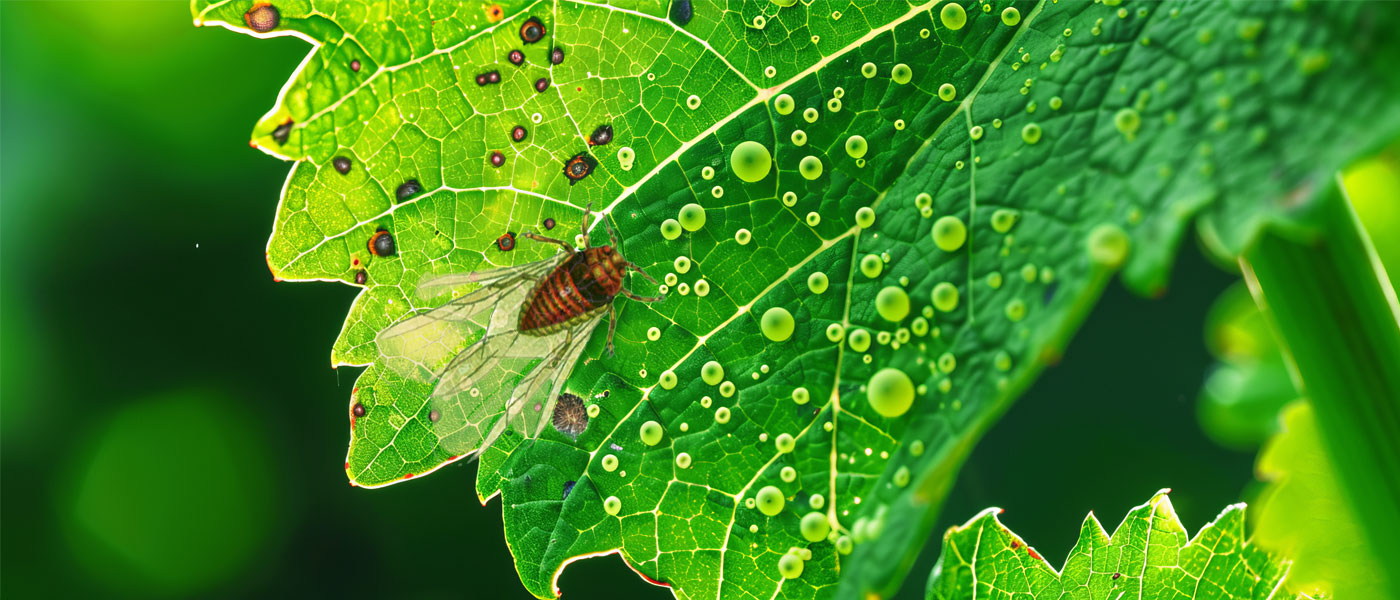What is phylloxera and how to control it?

Introduction
Phylloxera is a tiny, yet incredibly destructive pest that poses a significant threat to vineyards worldwide, including those in Bangalore. This small aphid-like insect attacks grapevines by feeding on their roots and leaves, ultimately leading to the plant’s death if uncontrolled. At Rico Wine Park and Vineyards, we understand the importance of protecting our vines from this pest to ensure the production of high-quality wines. This blog aims to explain phylloxera and how we can control it in simple easy-to-understand terms
What is Phylloxera?
Phylloxera, scientifically known as Daktulosphaira vitifoliae, is a pest that primarily affects grapevines. Originating from North America, it spread to Europe in the 19th century, causing widespread devastation to vineyards. The insect goes through different life stages, including egg, nymph, and adult and it can live both above and below ground. Phylloxera causes grapevine roots to swell and rot, weakening the vine, making it susceptible to other diseases, and ultimately killing the plant
Recognizing Phylloxera Infestation
Early detection of phylloxera is crucial in controlling its spread. Some signs of infestation include:Yellowing Leaves: The leaves of the vine may turn yellow and show stunted growth.
Root Damage: Swellings, nodules, and rot on the roots are indicative of phylloxera presence.
Reduced Vigor: The vine may exhibit poor growth and reduced vigour.
At Rico Wine Park and Vineyards, we regularly inspect our vineyards in Bangalore for these symptoms to ensure early detection and prompt action.
Controlling Phylloxera
Controlling phylloxera requires a multifaceted approach. Some of the most effective methods are:Resistant Rootstocks: One of the most effective ways to control phylloxera is by grafting vines onto phylloxera-resistant rootstocks. These rootstocks, often derived from native American grape species, are immune to the pest. At Rico Wine Park and Vineyards, we use resistant rootstocks to ensure the longevity and health of our vines.
Quarantine Measures: Strict quarantine measures are crucial to prevent phylloxera spread, including sanitising equipment and ensuring new plants or soil are phylloxera-free. Our vineyards in Bangalore follow strict protocols to minimise the risk of infestation.
Chemical Treatments: In cases of severe infestation, chemical treatments may be necessary. These treatments can help control the population of phylloxera and protect the vines. However, we prioritise sustainable practices at Rico Wine Park and Vineyards and use chemical treatments only when necessary.
Biological Control: Researchers are exploring biological control methods, such as introducing natural predators of phylloxera. While still under study, this approach holds promise for sustainable vineyard management.
Regular Monitoring: Continuous monitoring of the vineyards is crucial for early detection and control. At Rico Wine Park and Vineyards, we have a dedicated team that conducts regular inspections to ensure the health of our vines.
The Importance of Education and Awareness
Educating vineyard workers and the community about phylloxera is vital for effective control. At Rico Wine Park and Vineyards, we conduct training sessions for our staff and engage with the local community to raise awareness about the pest and its impact. By staying informed and vigilant, we can better protect our vines and ensure the production of high-quality wines.
Conclusion
Phylloxera is a formidable pest that requires careful management to protect vineyards. At Rico Wine Park and Vineyards, we are committed to employing the best practices to control and prevent phylloxera infestation. By using resistant rootstocks, implementing strict quarantine measures, and continuously monitoring our vines, we strive to maintain the health and productivity of our vineyards. Understanding and controlling phylloxera is essential to sustaining the vibrant vineyards in Bangalore and ensuring the continued enjoyment of our wines.

Comments
Post a Comment